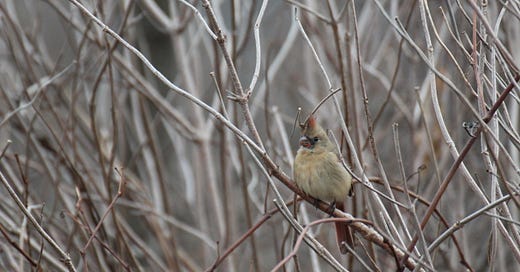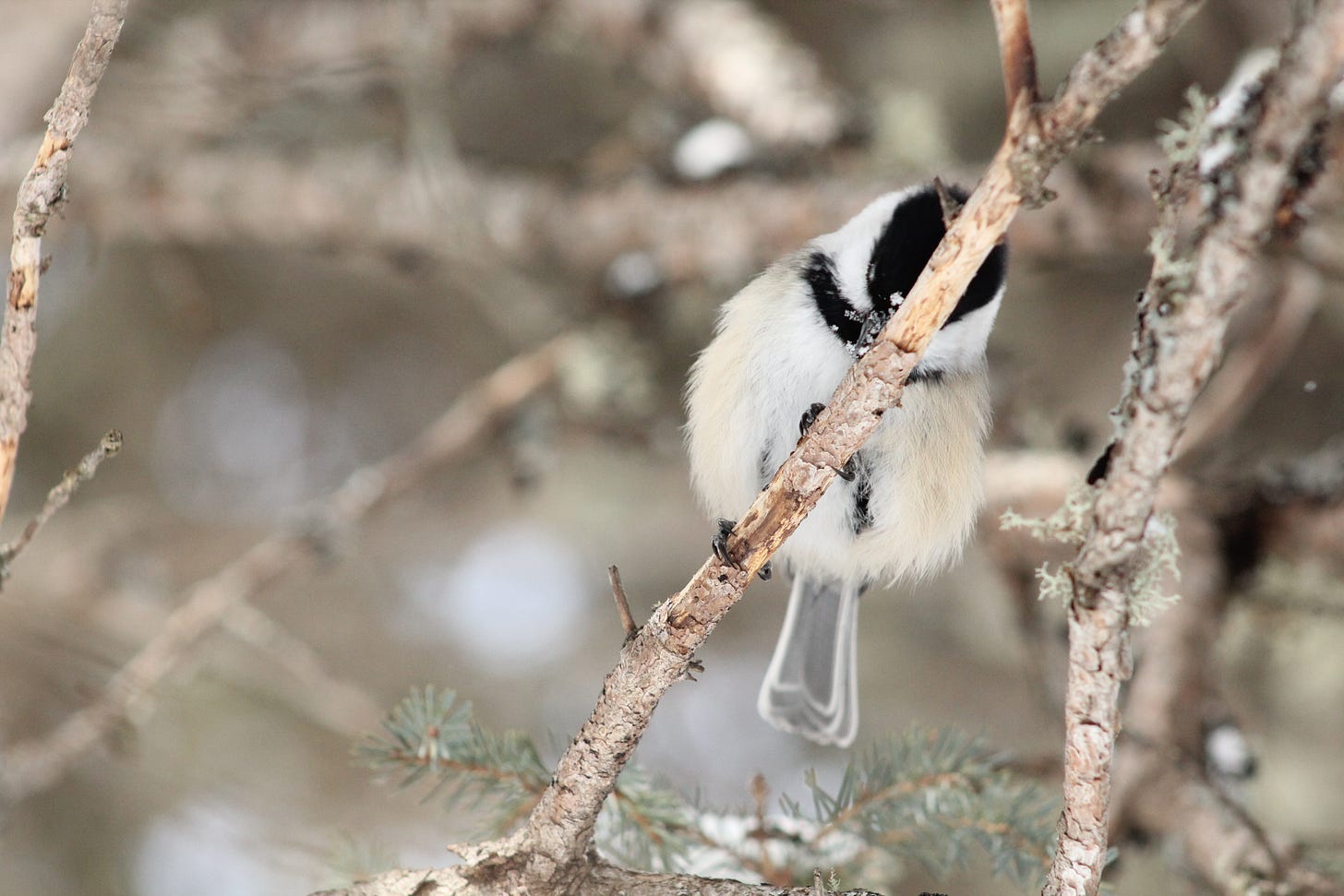The Hidden Art of Birdwatching
How learning to notice the birds in your area can change your view of life itself.
My uncle Sam is outgoing, joyous, and intelligent. Given the opportunity, he will strike up a personal conversation with whoever is near by, and will give them his undivided attention for the duration of the interaction. If you ever have the chance to sit down and chat with him, you’ll quickly learn that he truly loves to hear about your life and interests, and that he will remember them and ask about them the next time you see him. However well I have gotten to know him throughout the many years I’ve known him, there is one thing I never knew about him until the first time he met my husband, John.
I have always known John as a birder—in fact, much of our time together has been spent at parks or driving around looking for birds. He has a notebook that he has been filling since college with the list of birds he has seen, with a few sketches and facts also found scattered throughout the pages. The list includes birds I’ve recognized my whole life—American robins, bald eagles, goldfinches, cardinals, mourning doves—but is also filled with names I’d never heard of, much less seen. As we walked various parks in the Twin Cities metro, John patiently began to point out the birds I had never noticed before. When he paused on the trail, I learned to follow his silent gaze in search of the bird that had caught his attention. In this way I saw my first barred owl, egret, common loon, catbird, and kingfisher.
Birding is not just a checklist of species, however. It is just as exciting to spot your thirtieth barred owl as it is your first, and it is routine for birders to visit the same spots nearly every day. Some birders track migration, some observe the same bird or flock throughout a season, or some document one area’s total variety of birds. This dedication to knowing a place through its birds takes time and a whole lot of patience. It is common to go birding and see nothing but a few robins and some chickadees. Birding itself takes time and patience—birds will rarely show themselves unless you wait for them quietly and without moving.
The first time I identified a unique bird without John was right after he bought me my own pair of binoculars to take on our birding trips. He got sick and I went on a walk after work alone. As I walked, I noticed a faint tapping noise. Right in front of me, contentedly pecking at a tree trunk, was a pileated woodpecker, which is the largest in the state. I watched it, frozen, for about five minutes, until another hiker came along and it flew off deeper into the forest. I called John immediately, elated that I’d noticed the woodpecker all by myself (only a few months previously, I’d been unable to notice a barred owl only about ten feet from me until John physically pointed me to it).
In the following months, I began to notice birds everywhere—the red-tailed hawks sitting on light posts, the nuthatches outside our window, the turkey vultures flying overhead. After moving to the country, I’ve found myself identifying the birds I see flying around our land—eagles carrying fish away from the river, woodpeckers visiting our feeders, blue jays calling at each other from the trees. In the summer, we watched wood ducks and mergansers swimming in the river, and saw sandhill cranes flying overhead. Learning our land by learning its birds has made me feel at home and at peace. I treasure seeing ravens in our field and knowing that I have only just moved far enough north to see a raven at all, much less from my living room window. I find myself getting excited for the migrations to come, and I wonder if I will ever track them from my front porch. Although I cannot identify many birds on my own, still, I identify every bird I’ve come to know as soon as I see it. If you were to ride in the car with us, you would hear us pointing out birds to each other often, identifying them as we go. We have driven many hours specifically to go see rare birds, to go owling, or to go birding with one of John’s friends, and we have begun to talk about the trips we hope to go on someday, both nationally and internationally, to see birds we cannot see here.
My Uncle Sam is a birder too—I should have picked up on it from the many feeders outside his window, the bird call clock on his wall, but I never thought of it until he began to talk about it with John. Now they both bring binoculars to family gatherings, and they plan outings to go birding together for hours, and I see him in an entirely new light. He, like John, sees the land around him in bright plumage and birdsong. I can only hope to see as well as them one day.
If you would like to learn to bird, here are a beginner’s recommendations:
Buy a pair of 8x42 binoculars—we have a pair of the Celestron Nature Binoculars and a pair of Nikon Monarch 5 Binoculars, and they’ve served us well.
Get a birding book—we use National Geographic’s Birds of North America, but the Sibley Guide is also good.
Birding apps and websites are a great help—download the Merlin app to help with bird calls and visual ID, and Thayer’s Birding Software and Cornell Lab of Ornithology are incredibly helpful websites.
Choose a spot to sit for an hour at a time while birding—write down what you hear and what you see, whether you identify it or not. I’ve often texted John sophisticated questions such as “What bird sounds like a foghorn?”
If you go on a walk to bird, pause and listen as often as you can. If you hear a sound, try to find where it is coming from. At first the surroundings will feel totally silent—after five minutes, your brain will shift and you will hear all the quiet sounds of nature around you.
Finally, if you have the opportunity, go birding with a more experienced birder. Many communities have birding groups—there is no better way to learn to spot and identify birds than to learn from someone who has been birding longer than you.








Troy and I started birdwatching during the Covid shutdown, and we have loads of feeders in our backyard we keep filled throughout the year. Living around so many lakes really is great for seeing so many birds. It’s almost time for the trumpeter swans to come back!